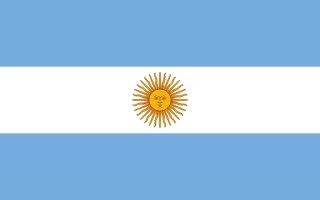1. Cruyff’s Absence Haunts the Netherlands: The Final That Got Away
June 25, 1978—Buenos Aires’ Estadio Monumental was a swirling cauldron of noise, 74,000 fans packed into the stands, hearts pounding, voices raw. The Netherlands had returned to the World Cup final, four years after their heartbreak in 1974. But something was missing. Or rather, someone.
Johan Cruyff—Total Football’s heartbeat, the man who had led the Oranje to the precipice of glory in Germany—was nowhere to be seen. His absence cast a long shadow over the Dutch campaign. Officially, he cited family reasons. Later, he hinted at discomfort with Argentina’s political situation under the ruling junta. Whatever the reason, his ghost loomed large over this final.
Still, the Dutch had dazzled. They had fought through the group stage—holding Peru to a 0-0 draw, edging past Scotland 3-2 (thanks to a Johnny Rep double), and brushing aside Iran 3-0 with a Rob Rensenbrink hat-trick. In the second round, they had crushed Austria 5-1, drawn 2-2 with West Germany, and sealed their place in the final with a battling 2-1 win over Italy. Rensenbrink was on fire, netting five goals. The Oranje were rolling.
But the final was different. Argentina, on home soil, were fierce. The tension was electric. The Monumental shook as Mario Kempes struck in the 38th minute. The Dutch fought back, pushing, pressing, searching for their moment. And finally, in the 82nd minute, it came. Dick Nanninga, towering above the defense, powered home a header. 1-1. The Dutch had life.
Then, in the 90th minute, the defining moment—Rensenbrink, the man of the tournament for the Netherlands, found himself through on goal. Time seemed to slow. He took aim, the title on his boot—
And the ball kissed the post.
Agony.
Extra time arrived. The Dutch were stunned. Argentina smelled blood. Kempes, relentless, pounced again in the 105th minute, carving through the exhausted Dutch defense. Daniel Bertoni finished them off in the 115th. 3-1. Argentina were champions. Buenos Aires erupted.
The Dutch? They slumped to the turf, shattered. “We missed Johan,” sighed coach Ernst Happel. Rep was gutted. “He would have changed everything.” The stats were tight—10 shots to Argentina’s 12. But the magic? The genius? It had been missing.
In the streets, Argentina partied. Kempes beamed. “We took it.” In Dutch bars, the talk turned to the what-ifs. Rensenbrink’s post. Cruyff’s absence. Could Johan have unlocked Argentina’s defense? Could he have made the difference?
A second straight final lost. Another golden generation left empty-handed.
Cruyff never played another World Cup. His legend endured, but ’78 remained the great “what if” of Dutch football. The Netherlands had come so close—again. But without their king, their kingdom was left without a crown.

2. Passarella’s Steel: The Backbone of Argentina’s First World Cup Triumph
June 25, 1978—In the searing heat of Buenos Aires, 74,000 fans packed into the Monumental, their voices a deafening roar. Argentina stood on the brink of history. The Netherlands stood in their way. And at the heart of it all stood Daniel Passarella.
The 25-year-old captain, all grit and fire, was Argentina’s rock. Only 5’8”, but a colossus in defense, he had marshaled his team through the tournament with an iron will. The group stage was a battle—2-1 over Hungary (with Leopoldo Luque striking early), another 2-1 win over France (Passarella himself burying a crucial penalty), and a 1-0 loss to Italy. The second round saw Argentina explode—Kempes’ double sunk Poland 2-0, a gritty 0-0 against Brazil kept them alive, and then came the statement victory: a ruthless 6-0 demolition of Peru.
Now, the final. Passarella, unshaken, led his men into the fire.
Kempes struck first in the 38th minute, sending the stadium into bedlam. But the Dutch refused to fold. They fought, clawed, and finally, in the 82nd minute, Dick Nanninga rose high and buried a header. 1-1. The tension was unbearable.
Then came the moment that could have shattered Argentina’s dream—Rensenbrink’s last-gasp shot, a whisper away from glory, smacking the post in the 90th minute. Fate had chosen its side.
Extra time. And this is where Argentina’s warriors rose. Kempes, a man possessed, slalomed through the Dutch defense in the 105th minute, bundling the ball home. Then, in the 115th minute, Bertoni sealed it. 3-1. Argentina’s name was written in gold.
Passarella had been everywhere—blocking, tackling, commanding. His presence had held the Dutch at bay, his leadership had driven Argentina forward. “He’s our steel,” Kempes grinned afterward. “He’s the spine,” Luque added. Coach César Luis Menotti, cigar in hand, nodded in satisfaction. His team had conceded just six goals all tournament—none in the knockouts. That was Passarella’s doing.
As the final whistle blew, the Monumental exploded. Argentina had done it. Their first star was theirs. Passarella lifted the trophy high, his face drenched in sweat and triumph.
The Dutch trudged off, broken. Rensenbrink’s post still haunted them. But Argentina? They were immortal now.
In bars and plazas, in homes and streets, the celebrations raged through the night. “For the people,” Passarella roared. And it was. A victory for a nation desperate for joy. A victory that would be replayed over and over—Kempes’ goals, Bertoni’s finish, and Passarella, the unyielding general, leading his troops to glory.
Decades later, the memories endure. “He was born to lead,” Pelé once said. And in 1978, Daniel Passarella proved it.
He was Argentina’s heart. Their warrior. Their champion.

3. Kempes’ Golden Boot Glory: The Striker Who Delivered Argentina’s First Crown
June 25, 1978—Buenos Aires, the Estadio Monumental, and a sea of 74,000 fans roaring into the night as Argentina chases its first World Cup glory. At the heart of it all? Mario Kempes, the shaggy-haired striker whose name would soon be written in golden letters in football history. The final against the Netherlands wasn’t just another game; it was the culmination of a tournament that had seen Kempes rise from the shadows to become the undisputed hero of the Albiceleste.
Kempes had been oddly quiet in the group stage—three matches, not a single goal. Argentina edged past Hungary (2-1) and France (2-1) before falling 1-0 to Italy. Critics whispered—was he off his game? Then came the second round, and suddenly, everything clicked. Against Poland, he bagged a brace (16th and 71st minutes), setting the stage for what was to come. A tense goalless draw against Brazil followed, but the floodgates burst open against Peru—Argentina’s emphatic 6-0 victory, Kempes scoring twice (21st and 49th). The tournament had finally found its talisman.
Then came the final—a tense, scrappy affair. The Netherlands, experienced and disciplined, held their own. But in the 38th minute, Kempes exploded. A moment of magic—he weaved past Ruud Krol, danced around the Dutch defense, and slotted the ball past Jan Jongbloed. 1-0, Monumental erupting. The Netherlands clawed back—Dick Nanninga’s header in the 82nd minute leveled it at 1-1. But Kempes wasn’t done.
Extra time. The 105th minute. Chaos in the box. Kempes pounced, muscling his way through, striking past Jongbloed once more. The goal sent Argentina into delirium. The finishing touch? Daniel Bertoni’s 115th-minute strike. 3-1, and Argentina had their first World Cup. Kempes, drenched in sweat and glory, had sealed his place in history.
The numbers told the story—six goals, the Golden Boot secured. “He’s our fire,” captain Daniel Passarella declared. Twelve shots in the final alone, relentless movement, boundless energy. His touch, his instinct—it all came alive when Argentina needed it most. César Luis Menotti, Argentina’s chain-smoking mastermind of a coach, summed it up perfectly: “He came alive when it mattered.”
The streets of Buenos Aires were electric—jubilation mixed with the undertone of Argentina’s turbulent political backdrop. But for a brief moment, football was everything. “Unstoppable,” sighed the Netherlands’ Rob Rensenbrink. Replays of Kempes’ goals played endlessly—his fierce strikes against Poland, his dazzling movement against the Netherlands. Teammate Leopoldo Luque grinned, “He’s the spark.” Five wins, six goals, one champion—Kempes was the heartbeat of it all.
Football is filled with ‘what-ifs’—but this was an undeniable triumph. Argentina, five wins, one draw, one loss, and their first golden star. Kempes was immortal. “Golden,” Menotti mused. Over the years, as debates raged in pubs and living rooms, one thing remained certain—Kempes had delivered a masterclass. “Argentina’s king,” he was dubbed. Even Krol had to admit, “Too good.”
Legacy is measured in trophies, in memories, in moments that last forever. Six goals, a nation crowned, and one man standing above all. Mario Kempes, the man who made history, the hero of ’78. A tale of flair and fire—his star still burns bright.

4. Peru’s Flair Fades: The Stunning Rise and Sudden Collapse
June 21, 1978—Córdoba, Estadio Chateau Carreras. 37,927 fans watched in anticipation as Peru, the surprise package of the tournament, took on hosts Argentina in a decisive second-round match. They had danced through the group stage—flair, precision, and Teófilo Cubillas at his dazzling best. Yet, on this night, their magic would vanish in a storm of Argentine goals.
Peru had thrilled neutrals from the start. They stunned Scotland 3-1, with Cubillas netting a breathtaking brace (43rd and 71st minutes). A gritty 0-0 draw against the Netherlands followed, and then came a 4-1 demolition of Iran—Cubillas, once again, at the heart of it all, scoring a majestic hat-trick (36th, 39th, and 79th minutes). Into the second round, they faced Brazil—another masterclass, winning 3-0, with Cubillas adding another (28th minute). Confidence was sky-high. And then, Argentina happened.
The stakes were clear—Argentina needed a four-goal win to surpass Brazil in the standings and reach the final. What followed was a destruction. Kempes struck twice (21st, 49th), Alberto Tarantini added another (43rd), and then the floodgates opened. Leopoldo Luque (50th, 72nd), René Houseman (67th). Final score? Argentina 6-0 Peru.
The whispers started immediately. How? How had a team that had conceded just five goals in four games suddenly collapsed? Some pointed to Argentina’s sheer ferocity—the relentless pressure, the wave after wave of attack. Others weren’t so sure. Rumors of political interference swirled—Argentina’s military junta, Peru’s fragile political situation, even economic agreements involving grain deals. Nothing was ever proven, but the debate lingers.
Cubillas, Peru’s talisman, was helpless that night. Ramon Quiroga, the Peruvian goalkeeper, was left picking the ball out of his net again and again. “We collapsed,” Cubillas admitted. Peru had been breathtaking up to this point—nine goals, flamboyant play, a South American force—but the 6-0 drubbing killed their World Cup dream in brutal fashion.
Córdoba was left stunned. The Argentine crowd rejoiced, knowing they were on their way to the final, but for Peru, the pain was immeasurable. “Too easy,” Tarantini smirked. The clips told the story—Kempes rampaging, Luque ruthless. “Something’s off,” Scotland’s Archie Gemmill murmured. And in bars and living rooms, the murmurs turned into heated debates.
“We fought,” Cubillas maintained. And they had. Until that fateful night. Peru’s spark had burned brightly, only to be snuffed out in a storm of Argentine goals.
What remains? The memories of brilliance—Cubillas’ hat-trick, their dazzling run. “We were class,” he reflected. Even Pelé acknowledged it: “They were a joy to watch.” But history is cruel. Argentina marched on, Peru faded into football’s archives—a team that had it all, until they didn’t. A tale of brilliance and heartbreak, a World Cup story debated over pints to this day.

5. Scotland’s Rollercoaster: The Heartbreak of 1978
June 3, 1978—Córdoba, Argentina. Under the sweltering sun and in front of 47,668 fans, Scotland’s World Cup dreams flickered and faded in a whirlwind of promise, frustration, and one unforgettable moment of magic. Manager Ally McLeod had boldly declared that his side could win the tournament, and for a fleeting moment, belief surged through the Tartan Army. But by the time the dust settled, Scotland had endured a rollercoaster ride of highs and heartbreaks, ultimately crashing out at the group stage.
The campaign started with a flicker of hope. Against Peru, Joe Jordan’s thumping header in the 14th minute sent Scottish fans into a frenzy—1-0. For a moment, it seemed McLeod’s prophecy might hold weight. But then came Teófilo Cubillas, the Peruvian maestro, who carved Scotland apart with a stunning brace (43rd, 71st), leading Peru to a shocking 3-1 comeback victory. The warning signs were there, but Scotland pressed on.
Next up: Iran. A must-win match turned into a nightmare. An own goal gifted Scotland a lead at the hour mark, but they failed to build on it. Iran, unfancied and overlooked, struck back to force a 1-1 draw, leaving McLeod’s men teetering on the brink. The dream was unraveling fast.
Then came the Netherlands, the tournament’s heavyweights. Scotland needed a miracle, and for a brief, dazzling moment, they had one. Archie Gemmill, in the 36th minute, danced through the Dutch defense, weaving past three defenders before lifting the ball into the net—a moment of sheer brilliance. “Best I’ve ever scored,” he later said. It was 3-1 to Scotland, a result that would have seen them progress. But hope was cruel. Johnny Rep struck twice, the Netherlands clawed back to 3-2, and Scotland were out. One win, one draw, and two defeats—one moment of magic amid the chaos.
“Peru killed us,” Jordan admitted later. McLeod, deflated, could only muster a shrug. The dream had died before it had truly begun. Scottish fans, who had flocked to Argentina with belief, left in despair. “Overhyped,” the headlines screamed. But in pubs across the country, fans replayed Gemmill’s goal over and over. It was a strike for the ages, a sliver of magic in an otherwise painful campaign.

6. Italy’s Stylish Surge: The Nearly Men of ’78
June 18, 1978—Buenos Aires, Estadio Monumental. Under the bright lights and in front of 71,712 roaring fans, Italy’s journey through the tournament came to a dramatic halt. Enzo Bearzot’s side had played with style, discipline, and grit, but against Argentina in the second round, their run ended in heartbreak. A single Mario Kempes strike in the 71st minute sealed their fate—1-0, and Italy were out.
The tournament had begun with flair. Paolo Rossi, back from suspension and eager to prove himself, spearheaded the charge. Against France, he struck early (29th minute), setting the tone in a 2-1 victory. Hungary fell next, 3-1, with Rossi again on target at 36 minutes. Then came the first true test: Argentina. Roberto Bettega’s powerful 67th-minute finish secured a 1-0 win, sending a message to the world—Italy were contenders.
The second round, however, brought new challenges. A gritty 0-0 draw against West Germany left them needing wins. Against the Netherlands, a tense affair saw both sides battling tooth and nail. An own goal gave Italy the edge, and despite a Dutch fightback, they edged it 2-1. Then, against Austria, Rossi’s cool 13th-minute strike secured another victory. Italy were rolling—until they ran into Argentina.
Passarella’s defense held firm, Zoff’s gloves worked overtime, but then came Kempes. In the 71st minute, the shaggy-haired Argentine weaved through the defense, slotting home a dagger of a goal. Italy had nine shots, pressed until the final whistle, but it wasn’t enough. Argentina had done just enough, and Italy’s stylish run ended just short of glory.
“We were close,” Dino Zoff sighed after the match. Rossi, whose four-goal tally had lit up the tournament, admitted, “They were tough.” But despite the disappointment, there was pride. Italy had dazzled—Rossi’s strikes, Bettega’s class, Bearzot’s tactical brilliance. In pubs back home, fans replayed the highlights, basking in what might have been. “Golden,” Bearzot mused.
Though they fell short, Italy’s 1978 run remains a tale of what could have been—a stylish, skillful side that lacked only the final push to the summit. Their moment would come, but for now, they were the nearly men, their surge through Argentina a story of both brilliance and bittersweet defeat.
